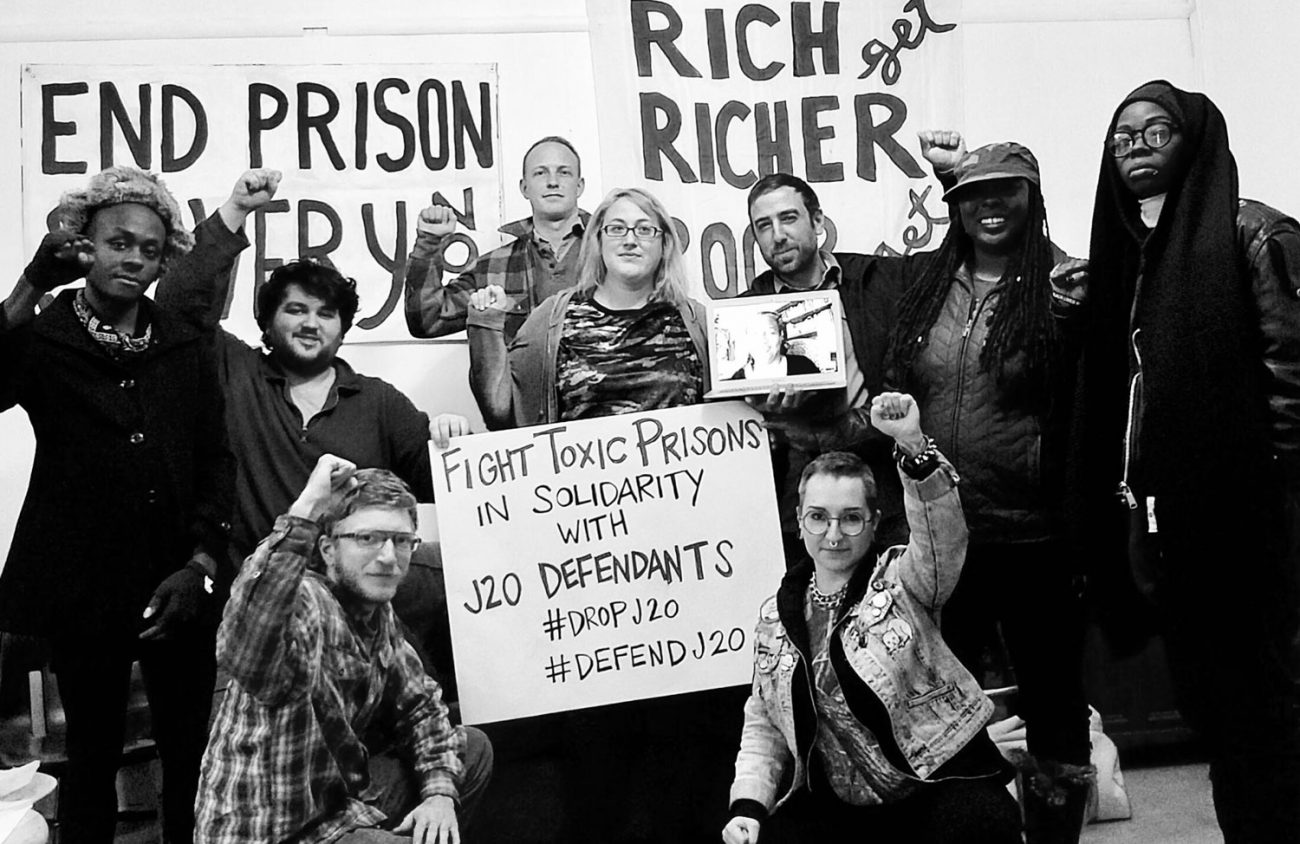The United States locks up more people than any dictatorship in the world. A total of 2.3 million people are currently in local jails and state or federal prisons, making us the leading country in incarceration, according to the Prison Policy Initiative.
A recent lecture at the University of Oregon delved into the history and current status of racism and toxicity in the U.S. prison industrial complex.
Of the 630,000 people being held in local jails across the nation, 443,000 have not been convicted of a crime and are held for not being able to make bail, the Prison Policy Initiative says.
Of Oregon’s 4 million residents, African-Americans comprise only 2.1 percent of the population, but Oregon has the seventh highest incarceration rate of African-American males in the country, with one in 21 black men having spent time in prison, according to the Sentencing Project.
Jordan Mazurek is a Ph.D. student at the universities of Kent and Hamburg. He spoke Nov. 21 to a small lecture hall of students and community activists at the University of Oregon about the toxicity of mass incarceration and its affects on people and the environment.
Mazurek is also an organizer with the Campaign to Fight Toxic Prisons, which successfully shut down a $444 million prison project proposed in Kentucky.
Inmates in federal prisons can be subjected to solitary confinement, where they can remain for days, weeks, months or even years for 23 to 24 hours per day. The United Nations has called for the end of the use of solitary confinement, which it defines as torture.
Prisons have toxic impacts on prisoners socially, physically, mentally and environmentally. Historically, prisons are built on landfills and superfund sites, defined by the EPA as hazardous waste sites. Mazurek says black and brown people are much more likely to live in toxic environments and prisons.
According to Montreal-based think tank Global Research — the Centre for Research on Globalization, “The U.S. Department of Defense is both the nation’s and the world’s, largest polluter.” Prison labor is used to build everything from military weapons to the student dorm furniture at the UO.
In addition to abuse, mistreatment and the psychological impacts prisons have on people, inmates also face toxic conditions like mold. Journalist Chandra Bozelko spent seven years in York Correctional Institution and noticed mold and other environmental issues in the prison.
“I worked in the kitchen and sometimes the water would have rust in it when we filled a big kettle to make hot cereal in the morning,” Bozelko tells EW via email. “Some kitchen supervisors told us to cook with it; others wouldn’t allow it. The water tasted terrible and came from a reservoir that the prison shared with local towns.”
Seattle artist and emcee Bypolar spoke during the lecture. He’s a prison and police abolitionist and recalled the horrific medical care he received while incarcerated. “I had my arm broken when I was in prison,” he says. “It’s still crooked now because they didn’t even set it. They casted it without setting it and sent me back and put me in the hole.”
Racism entrenched within the prison system is not limited to adults. Mazurek recalls the story of a young black woman who was sent to a juvenile detention center for dying her hair an “unnatural color … she dyed her hair blonde,” he says.
Mazurek cites legal scholar Michelle Alexander’s analysis in her book The New Jim Crow: Mass Incarceration in the Age of Colorblindness in which she draws the line from slavery to prisons as a way to control black people after slavery was abolished. He adds that the expansion of prisons is a result of the “war on drugs,” a political tool used by the Nixon campaign to target its “two enemies: the antiwar left and black people,” according a statement made by John Ehrlichman, a Nixon aide.
According to a CNN Money analysis of 40 states, funds used to imprison people far outspend tax dollars for public elementary students. For example, the state of New York spends nearly $20,000 per student, but by comparison its shells out nearly $60,000 per incarcerated inmate.
For more information about prison toxicity, visit fighttoxicprisons.org.
